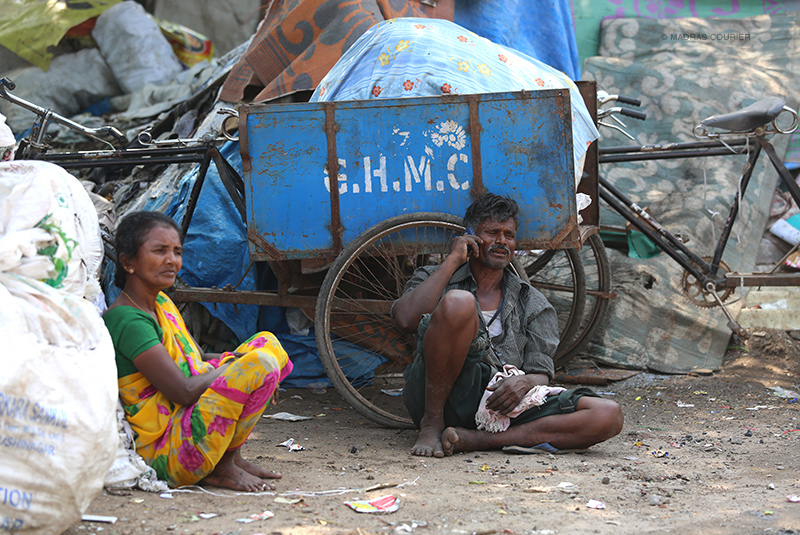Human society has always produced waste, and always will. Waste—materials and substances without value—is constantly generated in all production, all distribution and all consumption. Waste is even generated in the handling of waste itself. The moment it spends without value may last a few minutes or for all effective eternity. The provider of resources—nature—is not simply a tap. In subjecting waste to the physical laws of decomposition and recomposition, nature is also a sink. The roles of sinks are poorly recognised in the study of sustainable development: only those of gaseous sinks in the atmosphere have political urgency. Many biophysical processes act almost infinitesimally slowly compared with the rapid physical cycles of the developing economy with which they co-evolve. My fieldwork in 2015–2016 on the waste economy of a small town in south India indicated that about half the waste cannot be recycled and is left to nature’s sinks: riverbeds, lakes (and the sea), subsoil and, increasingly, socially produced land surfaces including verges, tracks and dump-yards.
In the production of waste globally, India ranks third after the United States and China. A 2013 paper in Nature also describes India’s waste production as among the fastest growing. Urban India is reckoned to emit 62m tonnes of solid waste per year—160,000 TPD. This quantity is predicted to increase by a factor of 2.7 by 2030, and by 7 by 2050. Even harder to imagine, ‘peak waste’ is reckoned as at a century into the future (Hoornweg, et al., 2013). Seventy per cent of urban waste is collected, of which 30 per cent is currently ‘treated’. At present, just 12 per cent of urban faeces is treated.
Waste is classified in many different ways by its economic agents and regulators, by engineers and international development agencies. The official, national Total Sanitation Campaign (Nirmal Bharat Abhiyan [NBA]), classifies waste through many management technologies, while the World Bank stresses the fact of it not being wanted after productive use. Urban human waste is cast as a network engineering problem intimately bound with water supplies. Waste is liquid and solid (gaseous is not recognised and is a separate ‘field’); hazardous vs. non-hazardous; according to (bio)toxicity; wet/dry; by origins (e.g., medical waste, meals hotels, streets); by significant (recyclable) materials (e.g., plastic, glass, paper, cardboard, metal); by site (e.g., the Railways); by commodity (e.g., motherboards, bottles); by types of degradability (e.g., edible [by animals], biodegradable, non-biodegradable); by human vs. non-human waste; human and non-human disposal (e.g., animals, nature); and by the kind of exchange involved (e.g., gathering, barter, sharing, buying and selling, gifting for second-hand reuse and sale, recycling or disposal involving public expenditure); and abandoning. So one of the most important characteristics of waste, both for our understanding of it and for urban development policy, is its discursive incoherence. The wide range of principles and the incoherence resulting from their daily use defeats the concept of a ‘system’ of waste.
Copyright©Madras Courier, All Rights Reserved. You may share using our article tools. Please don't cut articles from madrascourier.com and redistribute by email, post to the web, mobile phone or social media.Please send in your feed back and comments to [email protected]











